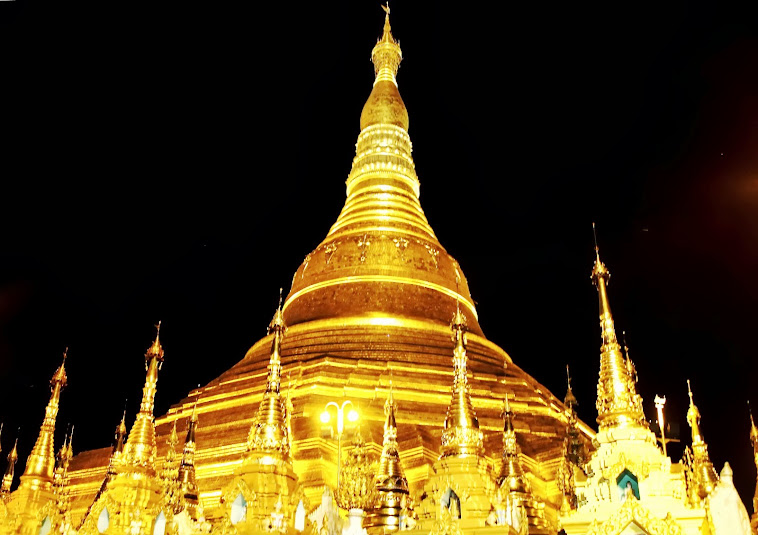(MraukU,Sitwe(Akyab),Thandwe(Sandoway),Kyaukphyu)
Profile of Mrauk U
Largely unknown to the Western world for much of its tur¬bulent history, Arakan played a pivotal role in the exchange of cultures and religions between India and Southeast Asia. For over a thousand years the region which now forms the Rakhine State of the Union of Myanmar (Burma) was an inde¬pendent state whose rich history is only slowly being paid the attention it deserves. Stretching along the Bay of Bengal, from the Naaf River which separates it from Bangladesh to Cape Negrais in southern Burma, it occupies the narrow strip of land to the west of the mountains of the Arakan Yoma (Range). Land and sea routes connected it with Bengal to the west and Burma proper to the east, routes that were traveled by peo¬ples, religions and cultures. When its neighbors were weak, Arakan was able to expand its influence along the coast to the east, west and south. At other times strong and aggressive neigh¬bouring states would drive the Arakanese back to their home¬land in the north or, at times, seek to conquer them.
Arakan's heartland was in its north, based on the rich alluvial flood plains of the adjoining Kaladan and Le-mro valleys. The earliest cities were in the Kaladan valley, backed by hills and facing west, and were thus open to influence from India and beyond. Subsequently cities were founded west of the Le-mro River, more accessible to Burma proper. The greatest city, Mrauk-U, bestrides the gap between these two valleys and thus could control both. All these cities were accessible to the Bay of Bengal through the tidal Mayu, Kaladan and Le-mro Rivers and their tributaries.
From the early centuries of the present era Arakan was ruled by kings who adopted Indian titles and traditions to suit their own environment. Indian Brahmins conducted the royal cer¬emonial, Buddhist monks spread their teachings, traders came and went and artists and architects used Indian models for in¬spiration. In the later period, there was also influence from Islamic courts of Bengal and Delhi. As an important centre for trade and as a goal of Buddhist pilgrims it was also the recipi¬ent of influence from other cultural centres in Southeast Asia. But the peoples of Arakan - like their counterparts elsewhere. In the region - also followed older traditions connected with their land and the spirits which guarded it. Many of these still survive in fertility and spirit cults, or have been absorbed into the Buddhist Pantheon.
Arakan was discovered and forgotten by the rest of the world as its power rose and fell. In the first century AD the Alexandrian geographer Ptolemy knew it as Argyre, the land of silver, which was visited by merchants from southern India. Chinese Buddhist pilgrims of the seventh century knew it and the area of east Bengal within its cultural sphere as A-li-ki-lo or Harikela. The Burmese inscriptions of Pagan and Ava from the twelfth to fifteenth centuries refer to the Country as Rakhaing, the Tibetan historians Rakhan, and the Sri Lankan chronicles Rakhanga. Portuguese explorers from the fifteenth century call it Rachani and Aracan, and were followed in this by the later Dutch and English traders. The spelling 'Arakan' became standard in the eighteenth century.




No comments:
Post a Comment